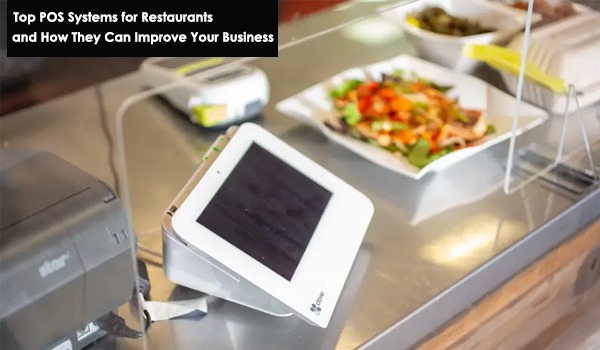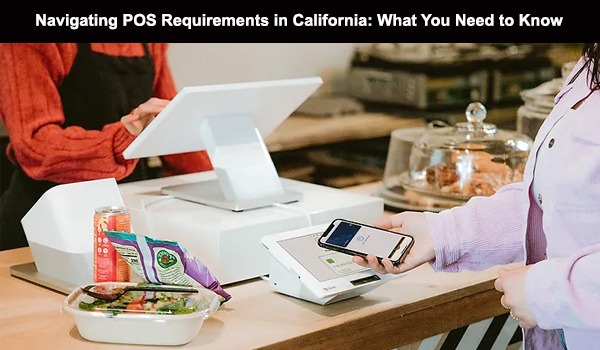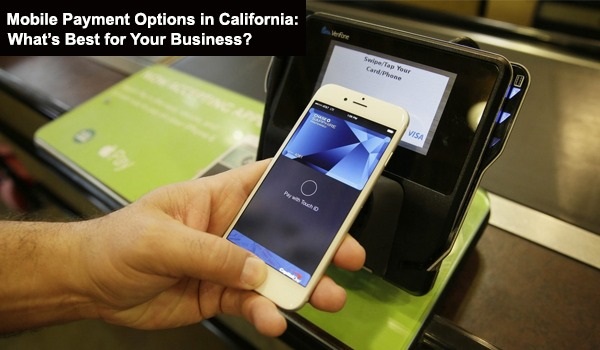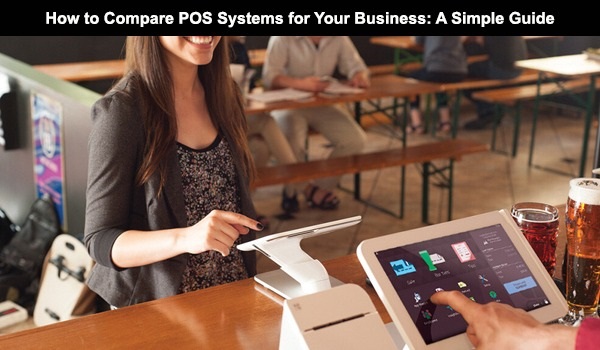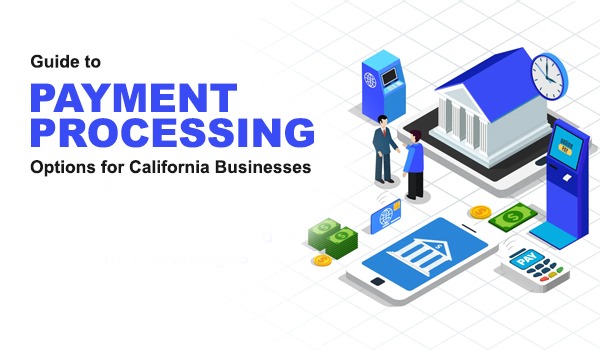
The importance of efficient payment processing
Efficient payment processing is crucial for California businesses to thrive in today's competitive market. It ensures smooth transactions, improves cash flow, and enhances customer satisfaction. By implementing the right payment solutions, businesses can reduce processing times, minimize errors, and provide a seamless experience for their customers.
Overview of the California business landscape
California boasts a diverse and dynamic business environment, ranging from tech startups in Silicon Valley to small family-owned shops in rural areas. With its large population and strong economy, the state offers numerous opportunities for businesses across various industries. However, this diversity also means that payment processing needs can vary significantly from one business to another.
Key considerations for choosing payment processing options
When selecting payment processing options, California business owners should consider factors such as:
- Transaction volume and average ticket size.
- Target customer demographics and preferences.
- Business type (e-commerce, brick-and-mortar, or hybrid)
- Integration with existing systems
- Security and compliance requirements
- Cost structure and fees
Traditional Payment Processing Methods
Cash transactions: Pros, cons, and legal considerations
Cash remains a popular payment method for many small businesses in California.
Pros
- Immediate access to funds.
- No processing fees.
- Simple to handle for small transactions.
Cons
- Security risks (theft, counterfeit bills).
- Time-consuming to count and manage.
- Limited for large purchases.
Legal considerations
- Reporting requirements for large cash transactions.
- Proper cash handling procedures to prevent money laundering.
Check payments: Security measures and processing times
While less common than in the past, checks are still used by some businesses and customers.
Security measures
- Verify customer ID.
- Use check verification services.
- Implement proper check storage and handling procedures.
Processing times
- Traditional checks may take 2-5 business days to clear.
- Electronic check processing can be faster, often clearing within 24-48 hours.
Wire transfers: Fees, speed, and international capabilities
Wire transfers are useful for large transactions or international payments.
Fees
- Typically range from $15 to $50 per transfer.
- International transfers may incur additional fees.
Speed
- Domestic transfers are usually completed within 24 hours.
- International transfers may take 1-5 business days.
International capabilities
- Ability to send and receive payments in multiple currencies.
- Compliance with international banking regulations required.
Credit and Debit Card Processing
Setting up a merchant account
To accept credit and debit card payments, businesses need a merchant account. This can be obtained through:
- Banks.
- Independent Sales Organizations (ISOs).
- Payment Service Providers (PSPs).
The application process typically involves:
- Providing business documentation.
- Undergoing a credit check.
- Agreeing to terms and conditions.
Choosing the right payment gateway
A payment gateway securely transmits transaction data between the merchant and the payment processor. The following are factors to consider when choosing a payment gateway:
- Integration with your e-commerce platform or point-of-sale system.
- Security features and PCI DSS compliance.
- Supported payment methods.
- Transaction fees and pricing structure.
- Customer support and reliability.
Understanding fees and pricing structures
Credit card processing fees can be complex. Common fee structures include:
- Interchange-plus pricing.
- Flat-rate pricing
- Tiered pricing
Businesses should also be aware of additional fees such as:
- Monthly or annual fees.
- PCI compliance fees.
- Chargeback fees.
- Gateway fees.
Mobile Payment Solutions
Popular mobile payment apps for California businesses
Mobile payment apps have gained popularity among California businesses due to their convenience and widespread adoption by consumers. Some popular options include:
- Square.
- PayPal Here.
- Venmo for Business.
- Apple Pay.
- Google Pay.
These apps often offer features like:
- Low-cost card readers.
- Integration with accounting software.
- Inventory management tools.
NFC technology and contactless payments
Near Field Communication (NFC) technology enables contactless payments, which have become increasingly important in recent years. Benefits include:
- Faster transaction times.
- Improved hygiene (no need to handle cash or cards).
- Enhanced security through tokenization.
Many modern smartphones and credit cards support NFC payments, making it a convenient option for both businesses and customers.
Integration with existing POS systems
Many mobile payment solutions can integrate with existing Point of Sale (POS) systems, offering benefits such as:
- Unified reporting and analytics.
- Streamlined inventory management.
- Consistent customer experience across all payment methods.
When choosing a mobile payment solution, consider its compatibility with your current POS system and any plans for future upgrades.
E-commerce Payment Processing
Online payment gateways and shopping cart integration
For e-commerce businesses, selecting the right online payment gateway is crucial. Popular options for California businesses include:
- Stripe.
- PayPal.
- Authorize.Net.
- Square.
When choosing a gateway, consider:
- Integration with your e-commerce platform (e.g., Shopify, WooCommerce).
- Ease of use for customers.
- Security features and fraud prevention tools.
- Support for multiple payment methods.
Security measures and fraud prevention
E-commerce businesses face unique security challenges. Implement the following measures to protect your business and customers:
- Use SSL certificates to encrypt data transmission.
- Implement 3D Secure authentication for card payments.
- Use Address Verification Service (AVS) and CVV checks.
- Monitor transactions for suspicious activity.
- Keep software and systems up-to-date.
Multi-currency options for international customers
For California businesses serving international customers, offering multi-currency options can improve the shopping experience and potentially increase sales. Consider:
- Displaying prices in the customer's local currency.
- Offering payment options in multiple currencies.
- Using dynamic currency conversion services.
- Working with payment processors that are dedicated to international transactions.
Emerging Payment Technologies
Cryptocurrency acceptance: Opportunities and challenges
Accepting cryptocurrency payments can offer California businesses unique advantages:
Opportunities
- Attract tech-savvy customers.
- Potentially lower transaction fees.
- Fast international transactions.
Challenges
- Price volatility.
- Regulatory uncertainty.
- Technical complexity.
Businesses interested in accepting cryptocurrencies should carefully weigh the pros and cons and consider using a payment processor that specializes in crypto transactions.
Biometric payment methods: Fingerprint and facial recognition
Biometric payment methods are gaining traction due to their enhanced security and convenience. These methods include:
- Fingerprint scanning.
- Facial recognition.
- Palm vein scanning.
While still emerging, biometric payments offer potential benefits such as:
- Improved security and reduced fraud.
- Faster transaction times.
- Enhanced customer experience.
QR code payments: Implementation and benefits
QR code payments have seen increased adoption, particularly in the wake of the COVID-19 pandemic. Benefits include:
- Contactless transactions.
- Easy implementation with minimal hardware requirements/
- Potential for integration with loyalty programs and marketing efforts.
To implement QR code payments, businesses can:
- Use existing POS systems that support QR codes.
- Partner with payment providers offering QR code solutions.
- Create custom QR codes for specific products or services.
Compliance and Regulations in California
PCI DSS compliance for card payments
Payment Card Industry Data Security Standard (PCI DSS) compliance is mandatory for all businesses that handle credit card information. Key requirements include:
- Maintaining a secure network.
- Protecting cardholder data.
- Regularly updating and testing security systems.
- Implementing strong access control measures.
California businesses should work with their payment processors to ensure PCI DSS compliance and conduct regular self-assessments.
California Consumer Privacy Act (CCPA) considerations
The CCPA affects how businesses handle customer data, including payment information. Key considerations include:
- Providing clear privacy notices to customers.
- Offering customers the option to opt out of data sharing.
- Implementing data security measures.
- Responding to customer requests for data access or deletion.
Businesses should consult with legal experts to ensure CCPA compliance in their payment processing practices.
ADA compliance for digital payment interfaces
Ensuring that digital payment interfaces are accessible to all users is both a legal requirement and good business practice. Consider:
- Providing clear, readable text and color contrasts.
- Ensuring keyboard navigation for all functions.
- Offering alternative text for images and icons.
- Testing interfaces with screen readers and other assistive technologies.
Selecting the suitable payment processor for your Business
Evaluating your business needs and customer preferences
To select the best payment processor, consider:
- Your business type and industry.
- Average transaction volume and value.
- Customer demographics and preferences.
- Need for in-person, online, or mobile payments.
- Integration requirements with existing systems.
Comparing fees, features, and support services
When comparing payment processors, evaluate:
- Transaction fees and pricing structures.
- Hardware and software costs.
- Available features (e.g., recurring billing, invoicing).
- Quality of customer support.
- Reputation and reliability.
Scalability and future-proofing your payment system
Select a payment processor that can expand your business:
- Look for providers offering a range of services and payment methods.
- Consider the ease of adding new features or expanding to new markets.
- Evaluate the provider's track record of innovation and adapting to new technologies.
Implementing and Optimizing Your Payment Processing System
Staff training and customer education
Proper training is crucial for a smooth implementation:
- Provide comprehensive training for staff on new payment systems.
- Create clear instructions for customers on available payment options.
- Offer support for customers transitioning to new payment methods.
Monitoring and analyzing payment data
Use payment data to improve your business:
- Track sales patterns and customer preferences.
- Find opportunities for cost savings or revenue growthFearless Guide: California Business Payment Processing Secrets.
- Monitor for potential fraud or security issues.
Regularly reviewing and updating your payment strategy
Payment technology and customer preferences evolve rapidly. To stay competitive:
- Ensure that your payment processing system is reviewed regularly.
- Stay up-to-date on new payment technologies and trends.
- Solicit feedback from customers and staff on payment experiences.
Conclusion
- Understand the diverse payment needs of California's business landscape.
- Consider a mix of traditional and modern payment methods to cater to all customers.
- Prioritize security and compliance in all payment processing activities.
- Select solutions that can be adapted to your business's growth.
- Regularly review and update your payment strategy to stay competitive.


